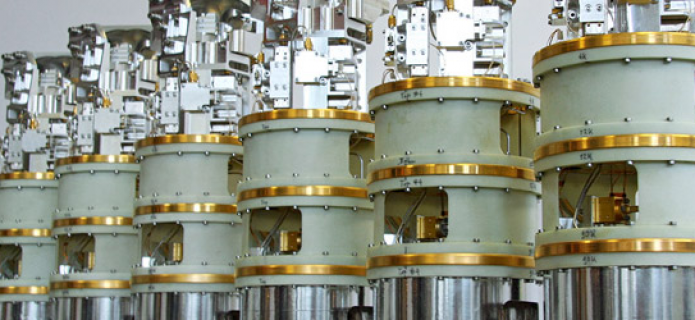ALMA is Being Equipped with Detectors to Perceive the Signals from the Universe
The European Southern Observatory (ESO) has just taken delivery of the last of a set of 73 state-of-the-art extremely sensitive detectors for the Atacama Large Millimeter/submillimeter Array (ALMA) project, from NOVA (the Netherlands Research School for Astronomy).
When complete, ALMA will consist of 66 large antennas, operating as a single telescope. It will observe the Universe in light with wavelengths around one millimeter or less — very short wavelength radio waves. To do this, each of the antennas must be equipped with an arsenal of detectors, like highly sensitive radio receivers, operating in different wavelength bands. The receivers, which are being made by institutes in Europe, North America, and Japan, must be cooled to temperatures of -269 degrees Celsius in order to detect the faint signals from space.
The so-called “Band 9” receivers are the second-shortest wavelength ALMA detectors, detecting light with wavelengths as short as 420µm (0.42 millimeters). The design and manufacture of receivers that can operate at these short wavelengths is particularly challenging.
The last of a complete set of Band 9 receivers — enough for all the ALMA antennas, plus spares — has now been delivered by NOVA under contract to ESO, the European partner in the ALMA project. This is the first full set of receivers to be completed, and they have been delivered two months ahead of schedule, and under budget.
The first of the Band 9 receivers are already in use at ALMA, which is under construction on the Chajnantor plateau, 5000 meters above sea level in the Chilean Andes. ALMA is being built in this remote location because the millimeter and submillimeter wavelengths which it is designed to observe are heavily absorbed by water vapor in the Earth’s atmosphere, especially at the shorter wavelengths such as those of Band 9. The exceptionally dry atmosphere at this high-altitude site makes it one of the best places on the planet for these kinds of astronomical observations.
ALMA began scientific observations at the end of September 2011 with a partial array of antennas, and construction will be completed in 2013. It will study the building blocks of stars, planetary systems, galaxies and life itself, letting astronomers address some of the deepest questions of our cosmic origins. For example, ALMA will be used to study the chemical and physical conditions in molecular clouds — the dense regions of gas and dust where new stars are being born. The observations made possible by the Band 9 receivers will let astronomers study the clouds at higher temperatures and densities, and with higher angular resolution, thus complementing the longer wavelength bands.
The Band 9 receiver project was carried out by the Astronomy Faculty of the University of Groningen, in collaboration with the Kavli Institute of the Delft University of Technology and SRON (the Netherlands Institute for Space Research). The consortium was led by NOVA.
The Atacama Large Millimeter/submillimeter Array (ALMA), an international astronomy facility, is a partnership of Europe, North America and East Asia in cooperation with the Republic of Chile.
